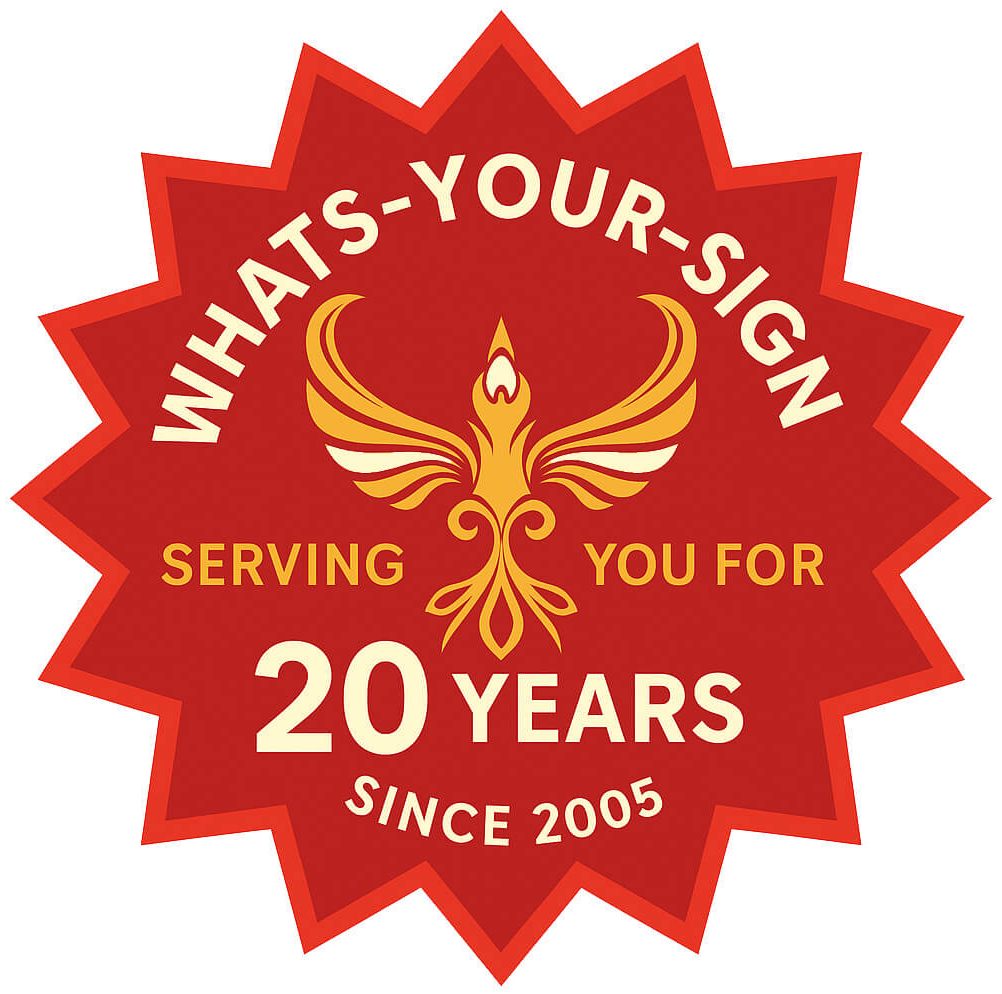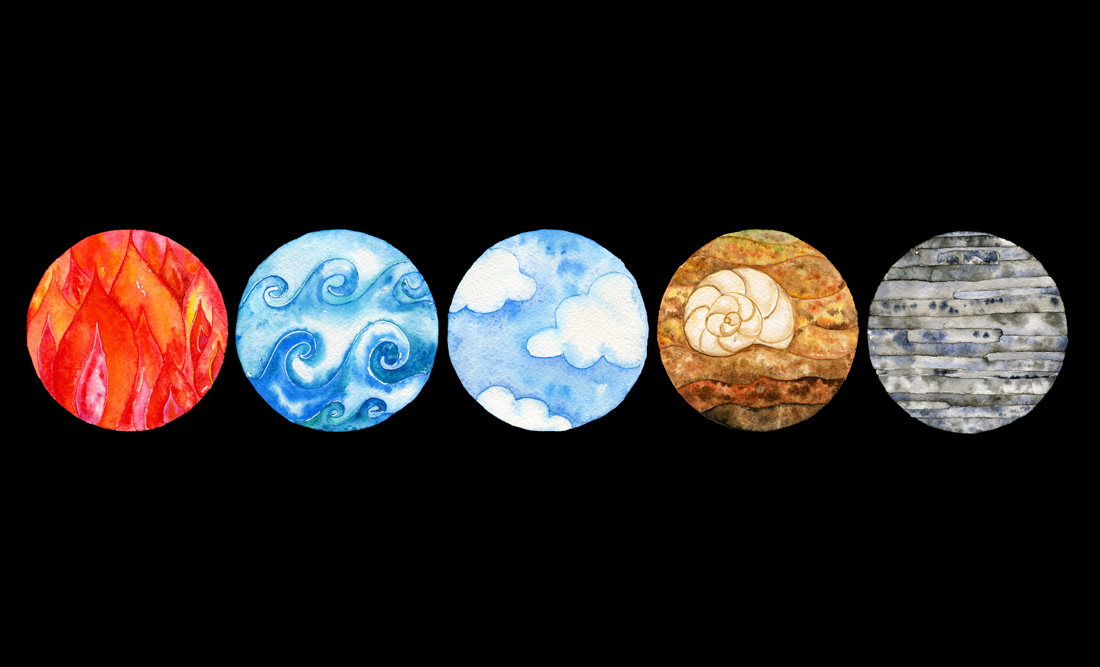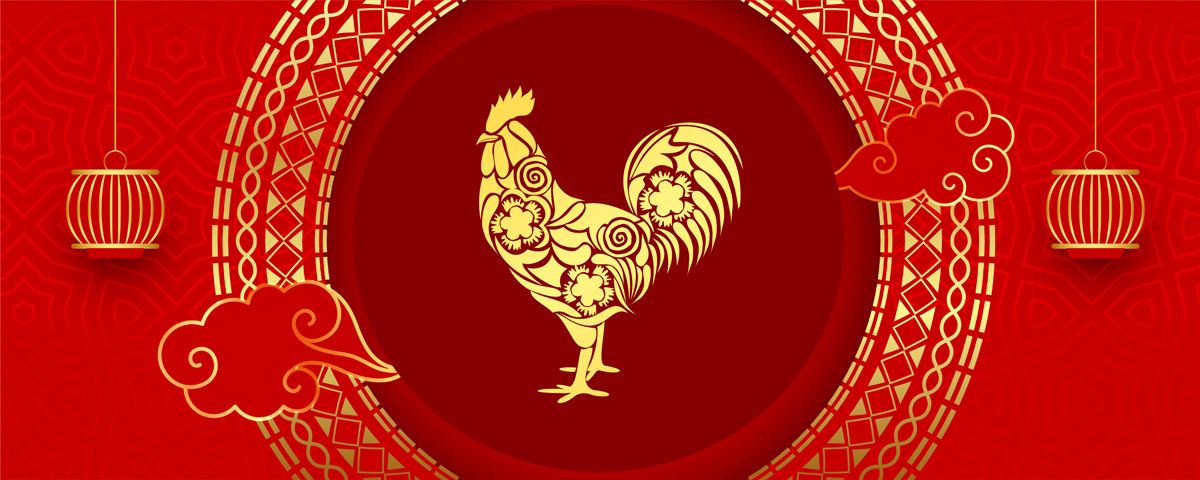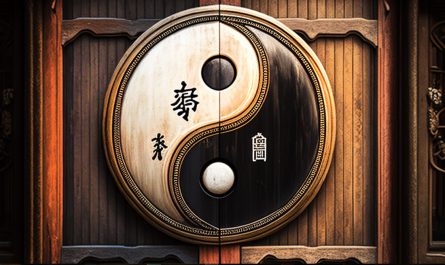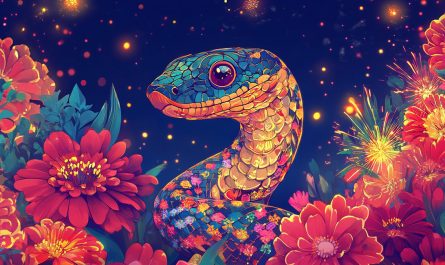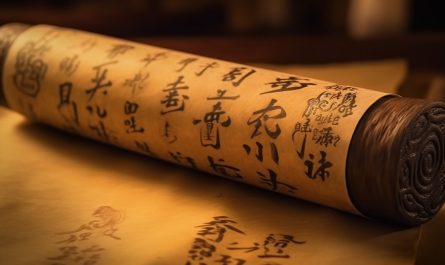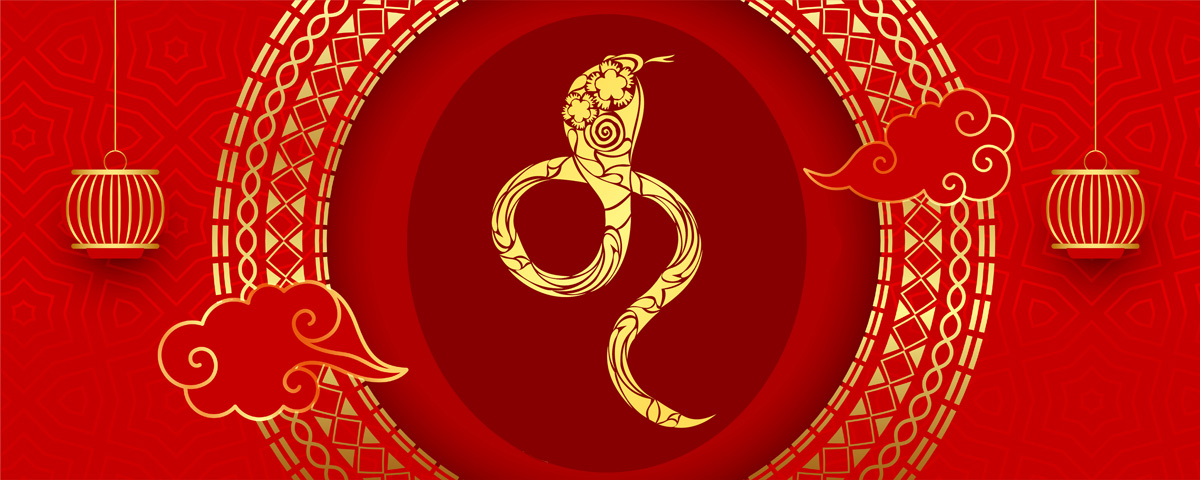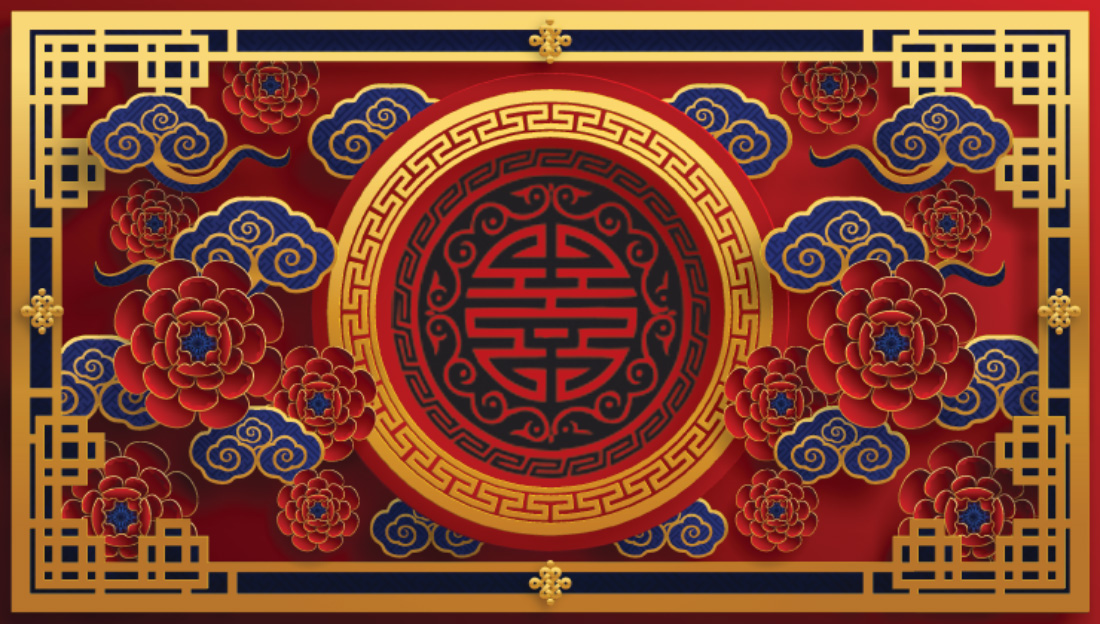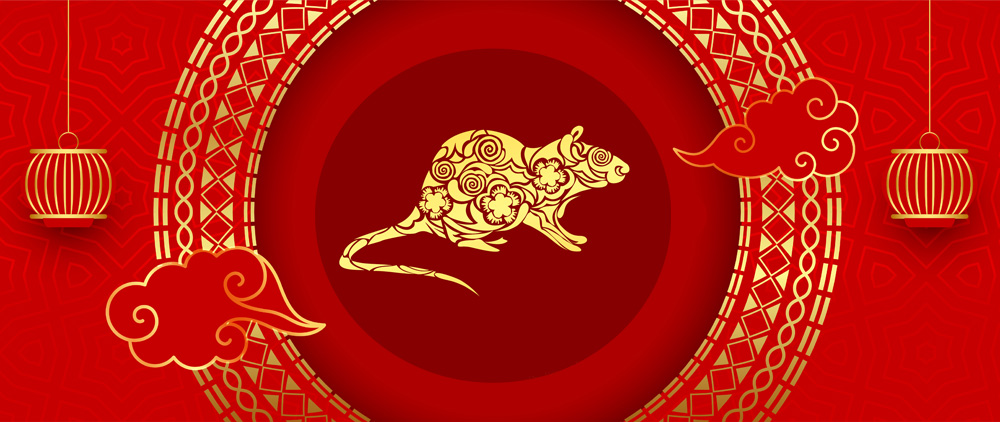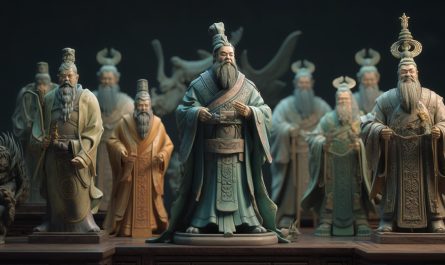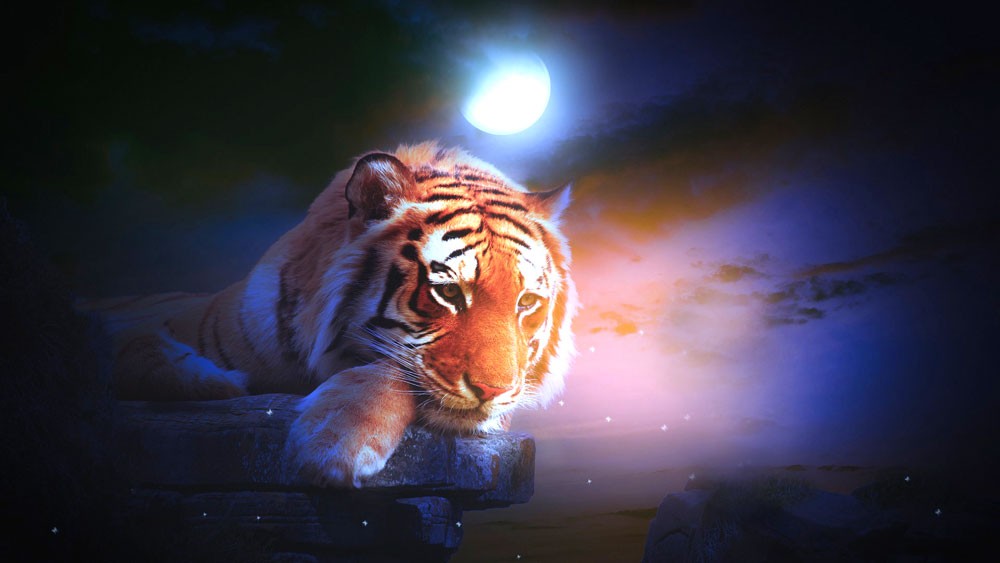Last Updated on September 16, 2025 by Avia
Are you looking for a way to increase your understanding of the world around you? If so, then the Wu Xing Five Elements Theory is something you should explore. This ancient Chinese philosophy is based on the idea that all things in the universe are composed of five fundamental elements and that these five elements interact with each other in ways that influence and shape our lives. In this blog post, we will deeply dive into the Wu Xing Five Elements Theory, exploring its history, concepts, and how it applies to our lives today. Read on to learn more about this fascinating part of Chinese culture!
Table of Contents
- What is Wu Xing?
- What is the Five Chinese Element Theory?
- The Five Elements and Their Meanings
- Difference Between the Chinese Five Elements and The Western Elements
- Chinese Elements and Associations
- Wu Xing in Chinese Medicine
- Wu Xing in the Chinese Zodiac
- Wu Xing and its Influence in Feng Shui
- Ways to Improve Your Life with Wu Xing
- Frequently Asked Questions About Wu Xing
- Conclusion About Wu Xing and the Five Chinese Elements
What is Wu Xing?
In Chinese philosophy, the Wu Xing (五行) are the five elements: Wood, Fire, Earth, Metal, and Water. These elements are also known as the Five Phases or Five Agents.
The wu xing (elements) are primarily concerned with processes of change. The interrelationships between the elements help to explain how things change and interact with each other. The ancient Chinese believed that everything in the universe is composed of these five elements and that interactions between them produce all observed changes.
What is the Five Chinese Element Theory?
The Five Chinese Elements Theory is a system of five elements that are used to explain interactions between the natural world and human beings. The five elements are Metal, Water, Wood, Fire, and Earth. Each element has its own characteristics and interacts with the other elements in specific ways.
The Five Chinese Elements Theory is based on the belief that everything in the universe is made up of these five elements. This includes the human body, which is made up of all five elements in different proportions. The theory states that each element has an effect on the others and that they must be in balance in order for a person to be healthy.
There are many different applications of the Five Chinese Elements Theory. It can be used to understand the physical world around us and how it works, or it can be used as a tool for healing. It can also be used to help people find their place in the world and to understand their relationships with others.
The Five Elements and Their Meanings
Each of the Chinese five elements have individual characteristics. These characteristics can be aligned to many different things, such as the zodiac, food, seasons, and even areas of the home (feng shui). Here are each of the five Chinese elements and their meanings.
Wood Characteristics

The Wood element is associated with growth, creativity, and new beginnings. The Chinese believe that the world is constantly changing and that everything is in a state of flux. The Wood element represents this constant change and movement.
The wood element is also associated with the color green. Green is the color of life and growth. It is the color of spring, when everything comes back to life after a long winter. A tree symbolizes the wood element. Trees are strong and tall, yet they are also flexible and adaptable. They can bend in the wind without breaking. Therefore, trees are a symbol of strength and resilience.
The planet Jupiter governs the wood element. Jupiter is associated with good fortune and luck. It is also associated with expansion and abundance. Wood energy is active and yang in nature. It is associated with the East, the season of Spring, and the Wind direction
Fire Characteristics

The Fire element is associated with the colors red and orange, as well as the season of summer. The Fire Chinese element is also said to be connected to the energy of Yang. According to the Wu Xing theory, the Fire element produces Wood, and is extinguished by Metal.
Fire energy is said to be passionate, enthusiastic, and lively. People who are in touch with their Fire energy are said to be creative and expressive. They may enjoy being in the spotlight and tend to have a strong personality. When balanced, Fire energy can help us to be confident and motivated. However, when out of balance, Fire energy can manifest as anger, frustration, or rage.
Earth Characteristics

The earth element is associated with the qualities of stability, structure, support, and security. When this element is in balance, we feel grounded and centered. We have a sense of belonging and connection to our surroundings. We feel safe and supported.
When the earth element is out of balance, we may feel disconnected from our surroundings. We may feel insecure and ungrounded. We may have difficulty finding a sense of belonging or feeling supported by our environment.
Metal Characteristics

In Chinese culture, the Metal element is associated with autumn and the west. It is considered to be yin in nature and is represented by the color white. The Metal element is also associated with the planet Venus.
The Metal element is said to be strong and unyielding. Those who are influenced by this element are said to be determined and decisive. They are also said to be good at planning and organizing. People with a strong Metal element are often successful in business.
Water Characteristics

Water is also representative of adaptability. Just as water takes on the shape of whatever container it is in, so too can we adapt to our surroundings and change as needed. Water is also reflective, just as a calm body of water can reflect the sky above it. In the same way, we can use our emotional intelligence to gain insights into ourselves and others.
Water is the element of mystery. It is associated with the unknown, with things that are hidden from view. Water is also associated with emotion and intuition. The water element is connected to our deepest feelings and emotions.
Difference Between the Chinese Five Elements and The Western Elements
There are standardized element systems in both the east and the west. So, what’s the difference between the Chinese five elements and the Western elements? The most notable difference is that were initially only four elements in the Western system, and there are five in Chinese. The Western four elements were first established by the Greek philosopher Aristotle. After establishing the original four, Aristotle later implemented a fifth element known as ether or aether. This element is meant to symbolize “all that is” or spirit. It is an all-encompassing agent that is supposed to animate and underscore all life as we know it.
Unlike the four traditional Western elements of fire, earth, air, and water, the Chinese Five Elements of wood, fire, earth, metal, and water not only describe the physical world but also encompass all aspects of human life. As you can see, the Western system has an air element, whereas the Chinese five elements do not include air.
While the Chinese Five Elements and Western elements may seem similar at first glance, there are some important distinctions between them. One key difference is that the Western elements are static, while the Chinese elements are in constant flux. This means that imbalances in the Chinese system are often more easily corrected than those in the Western system.
In addition, Wu Xing practitioners maintain that the Chinese system focuses on restoring balance within the body itself, while the Western system often relies on outside forces to correct imbalances. This means that acupuncture and other forms of Chinese medicine can be used to effectively treat conditions that might not respond well to Western medications.
Chinese Elements and Associations
The five elements are Wood, Fire, Earth, Metal, and Water. They are associated with the five planets Jupiter, Mars, Saturn, Venus, and Mercury. Each element has a season, a direction, a color, and an emotion.
Here is a chart of the five elements and their associations…
The Five Chinese Elements Associations Chart
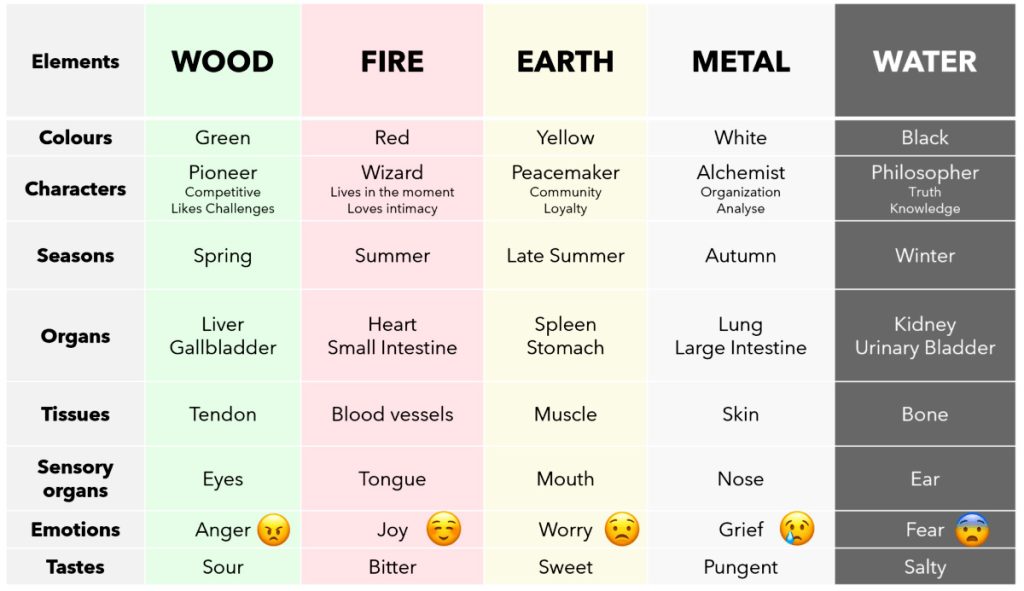
- Wood is associated with spring, east, green, and anger.
- Fire is associated with summer, south, red, and joy.
- Earth is associated with late summer, yellow, and pensiveness.
- Metal is associated with autumn, west, white, and grief.
- Water is associated with winter, north, blue, and fear.
Wu Xing in Chinese Medicine
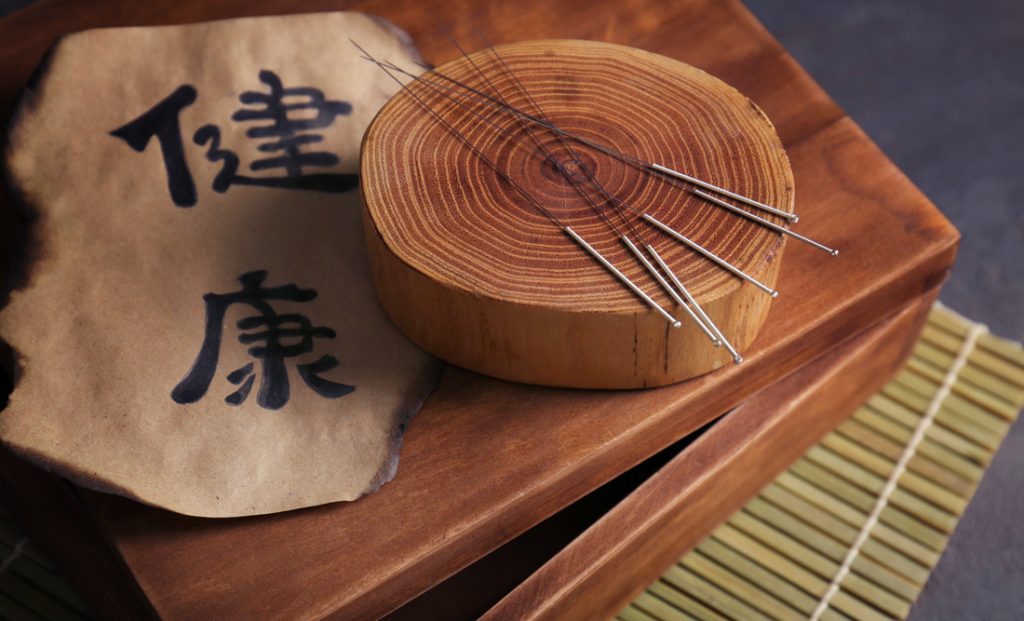
In Chinese medicine, the Wu Xing, or Five Elements theory is used to describe the interactions and relationships between different areas of the body. This theory is based on the five elements of wood, fire, earth, metal, and water. Each element has its own characteristics and qualities that can be used to diagnose and treat problems in the body.
The Five Elements theory is a way of understanding how energy flows through the body. It can be used to diagnose imbalances in the body and to determine the best course of treatment. In Chinese medicine, it is believed that everything in the universe is made up of these five elements. All of these elements are in constant motion and interact with each other.
The Five Elements theory can be used to understand problems in any area of the body. Each element is associated with certain organs and tissues. When one of these elements is out of balance, it can cause problems in the associated organs or tissues.
Each of the five elements is also associated with a particular season, organ system, emotion, direction, planet, and color. In addition, each element has both positive and negative aspects. For example, while wood represents growth and fertility, it can also represent anger and aggression.
The goal of Wu Xing in Chinese medicine is to maintain balance among the five elements. When one element is out of balance, it can have an impact on the others. For example, an imbalance in the water element can lead to problems with the kidneys or bladder.
Wu Xing in the Chinese Zodiac
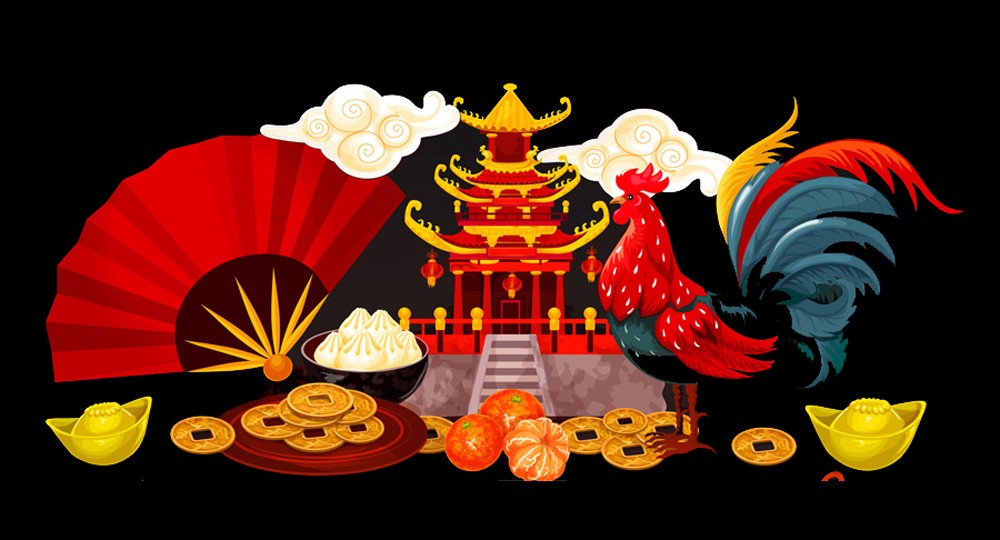
In Chinese culture, the five elements theory (Wu Xing) is used to describe interactions and relationships between things. Each element has a unique set of characteristics that can be used to describe people, events, and objects.
The five elements are also used to describe the twelve animals of the Chinese zodiac. Each animal is associated with one of the five elements. For example, the rat is associated with water, while the dragon is associated with wood.
The Chinese zodiac is based on a twelve-year lunar cycle, with each year represented by an animal. The five elements theory (Wu Xing) is used to explain how each zodiac sign interacts with each other and the world.
Here is a chart of Chinese zodiac and element associations:
| Fixed Element | Chinese Zodiac Sign |
| Fire | Snake, Horse |
| Earth | Ox, Dragon, Goat, Dog |
| Metal | Monkey, Rooster |
| Water | Pig, Rat |
Wu Xing and its Influence in Feng Shui

In Chinese culture, the five elements (Wu Xing) of wood, fire, earth, metal, and water are believed to interact with each other. The interplay between these five elements creates balance and harmony in the world.
Feng shui is the ancient Chinese art of placement. It is based on the belief that the placement of objects in the environment can impact the flow of energy (known as qi or chi). Feng shui practitioners believe that by creating a harmonious space, they can encourage positive qi flow and bring good luck and fortune to those who live there.
The five elements theory is an important part of feng shui. This theory states that everything in the universe is made up of these five elements. Each element has its own unique characteristics and energies. When used correctly, these elements can be used to create balance and harmony in a space.
Wood in Feng Shui
Wood represents growth and new beginnings. It is associated with the season of spring and the color green. Wood element decorating items include plants, flowers, and trees, wood accents, or wooden furniture. Greens and blues are good Feng Shui colors that represent the wood element.
Fire in Feng Shui
Fire represents enthusiasm, passion, and transformation. It is associated with the season of summer and the color red. Pinks and purples are also used to represent fire in Feng Shui. Fire element decorating items include candles, lanterns, and red fabrics. You can also incorporate primal animal prints to represent the Wu Xing fire element.
Earth in Feng Shui
Earth represents stability, groundedness, and nourishment. It is associated with the season of late summer/early fall and the colors yellow and brown. Earth element decorating items include clay pots, stones, and earth-toned hues. Rectangles are symbolic of the earth element in Chinese Wu Xing, so this can be used as a motif in regions that need an earthy, grounding energy in your home.
Metal in Feng Shui
An individual who is surrounded by metal is likely to be more organized, focused, righteous, and analytical. Metal affects mental clarity and logic. You may be seen as chatty, overly critical, and prone to speaking without thinking when there is too much metal, while you may feel a lack of focus, cautiousness, and lack of focus when there is too little metal. Round shapes and metallic colored objects (gold, silver) are used to amplify metal energy in the home.
Water in Feng Shui
A balanced balance of water brings about inspiration, wisdom, and insightfulness. It can create an unbalanced transition and a feeling of drowning. Water encompasses spirituality and emotions. Whenever there is too little water, you may experience loneliness, isolation, stress, and pettiness as well as feeling overwhelmed and overly social. Dark tones such as navy, indigo or black represent water in Feng Shui. You can incorporate fountains, a bowl of water with a plant in it, or a fish tank/bowl to boost water vibes too.
Ways to Improve Your Life with Wu Xing
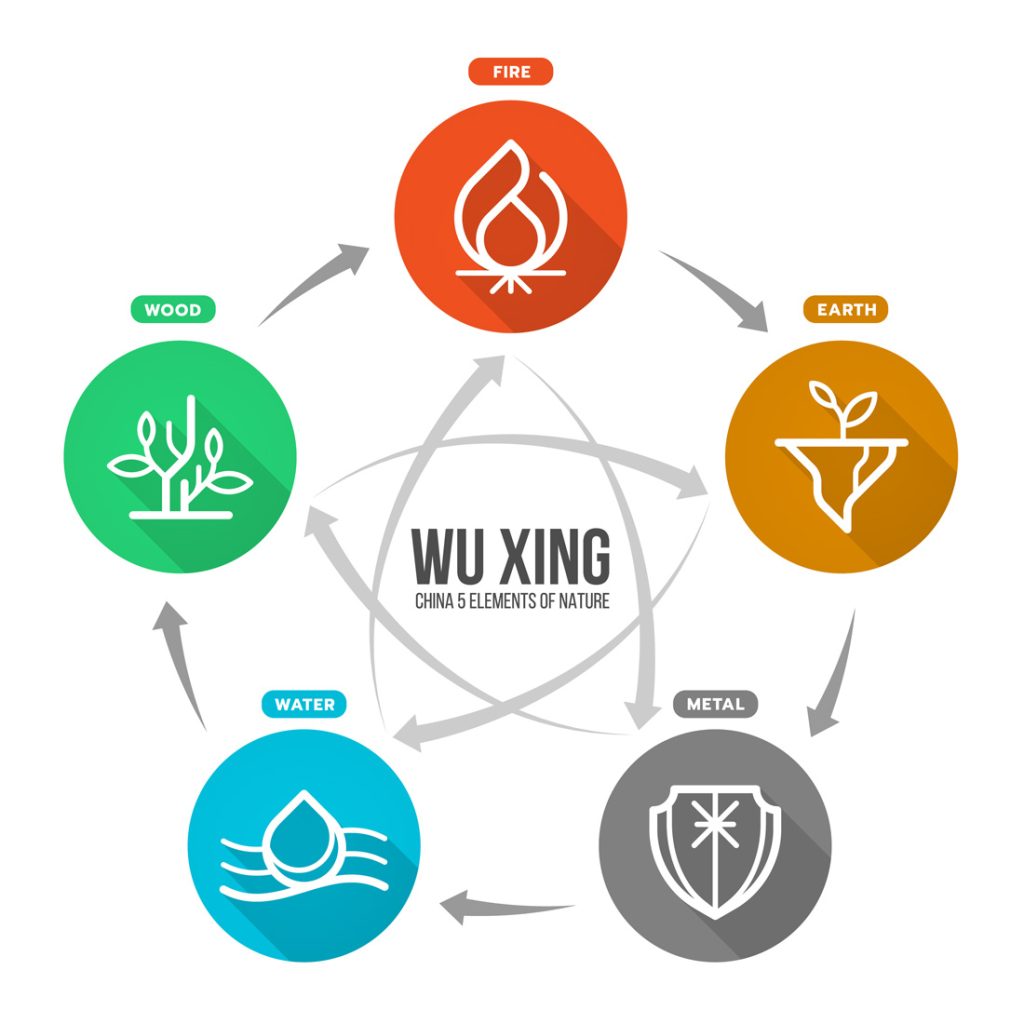
There are many ways to improve your life with wu xing. Here are a few suggestions that might be inspiring for you:
Harmonize with the seasons
The changing of the seasons is a natural cycle that affects all of us. By attuning ourselves to the season, we can maintain our health and vitality. Check out the chart above and familiarize yourself with the seasons associated with each element. This will help you use Wu Xing to improve your life by getting more attuned to the seasons and cycles of life.
Balance Yin Yang Energies
Yin and yang are the two opposing but complementary forces that make up the universe. Balancing these energies within ourselves can lead to greater harmony in our lives. Because Wu Xing is based on harmony and balance, establishing your yin and yang should deeply improve your life.
Eat According to Wu Xing
Nourish your body with healthy foods. The foods we eat have a direct impact on our health. Eating nutritious foods helps to keep our bodies strong and healthy. Here are some basic suggestions regarding foods and wu xing correspondences:
| Element | Food Ideas |
| Wood | Fish, brown rice, onion, celery, peppers (hot) |
| Fire | Chicken, garlic, sweet potatoes, ginger |
| Earth | Duck, liver, tofu, white rice, barley |
| Metal | Eggs, black beans, bamboo shoots, or asparagus |
| Water | Pork, cabbage, broccoli, carrots, mushrooms |
Frequently Asked Questions About Wu Xing

So, to summarize what we’ve been talking about up to this point….wu xing, also known as the five elements or five phases, is a central theory in Chinese philosophy and medicine. The five elements are wood, fire, earth, metal, and water. Each element has its own unique characteristics and interacts with the others in specific ways.
In traditional Chinese medicine, the human body is seen as an interconnected system of organs and tissues that each correspond to one of the five elements. imbalance in the body can lead to illness. By understanding the relationships between the five elements, practitioners can diagnose and treat imbalances to restore health.
Wood, Fire, Earth, Metal, Water
Wood is growing and expanding. Fire is hot and passionate. Earth is grounded and stable. Metal is strong and forceful. Water is flowing and flexible.
The elements interact with each other in both positive and negative ways. For example, Metal feeds on Water to grow stronger, but too much Metal can overwhelm Water and cause it to dry up. Similarly, Fire needs Wood to burn brightly but can also consume too much Wood and create destructive wildfires. A balance of all the elements is necessary for health and harmony.
In order of mutual generation the procession is: Wood, Fire, Earth, Metal, and Water.
For mutual overcoming the order of the elements are: Wood, Earth, Water, Fire, and Metal.
Conclusion About Wu Xing and the Five Chinese Elements
In conclusion, the wu xing five elements theory is a very old and important part of Chinese culture that is still relevant and utilized all over the world today. It teaches us about the five elements that make up everything in the universe and how they interact with each other. This theory can be applied to many different areas of life, including medicine, astrology, feng shui, and more. Hopefully, this summary of wu xing meaning and the Chinese five elements inspires you to utilize this ancient system in your own life to reinforce stability and harmony in your life.
Mighty brightly,
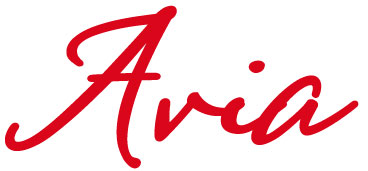
© Copyrighted. All Rights Reserved.
